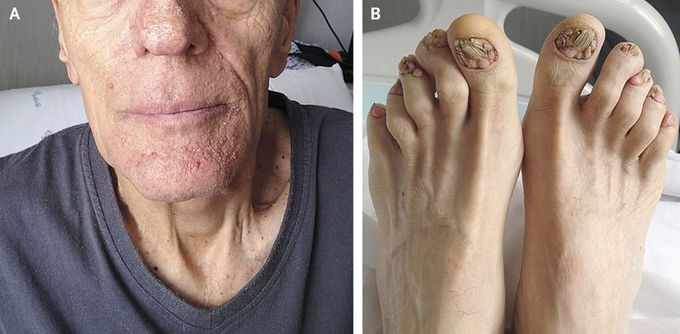


Tuberous Sclerosis Complex
A 71-year-old man presented to the nephrology department for the evaluation of chronic kidney disease, which had developed during the past 20 years. The patient had received a diagnosis of tuberous sclerosis complex, or Bourneville’s disease, in his late 20s. The physical examination revealed erythematous papules on the chin, nose, and cheeks consistent with facial angiofibromas (Panel A) and small, fleshy periungual fibromas of the toenails (Panel B). The patient had no history of seizures or developmental delay, and he had no family history of similar cutaneous findings. Tuberous sclerosis complex is an autosomal dominant condition that affects cellular differentiation and proliferation. The condition is characterized by the development of hamartomatous lesions that can affect many organ systems, including the central nervous system, eyes, skin, and kidneys. Facial angiofibromas consist of blood vessels and fibrous tissue. Periungual fibromas are benign tumors that are composed of connective tissue and typically appear in the second decade of life or later. Patients with this condition often have renal involvement, including the formation of angiomyolipomas or extensive renal cysts. For this patient, we recommended low salt intake, tight blood-pressure control (<130/80 mm Hg) with 5 mg of amlodipine twice daily, and avoidance of nonsteroidal antiinflammatory drugs. One year later, he had stable kidney function and unchanged cutaneous findings.


